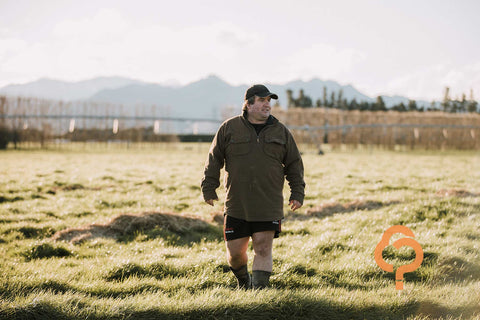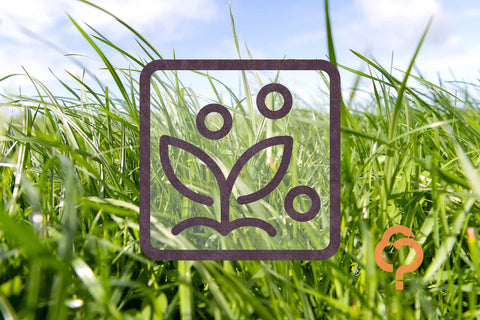Getting to know your soil is the first step in designing a successful fertiliser programme.
Why soil test?
Let’s not beat around the bush, soil testing is an extremely important part of farm business planning, and gives you a clear starting point when designing a robust sustainability plan and fertiliser programme. It also allows you to:
- Understand the nutrients your soil holds, such as nitrogen, phosphorus, and potassium
- Make the most of your budget by accurately assessing fertiliser and lime requirements
- Monitor how previous fertiliser applications have worked
- Track trends over time.
Making the most of your soil sample
The more variations there are in your sample area, the harder it is to manage and fertilise it correctly, and, frankly, this could get confusing very fast.
We highly recommend choosing similar areas that are close in soil type, fertiliser history, productivity, topography (slope) and land use.
Main out take, is that the more variations you have, the more soil samples you’ll need to take. The less variation, the better value you'll get from your sample.
Here are a few tips:

How do I take samples for soil analysis?
-
As above, choose sites that represent the whole area. That means avoiding unusual areas like gateways, troughs, fence lines, unusually high or low fertility areas and manure or waste spots.
Take your samples in a transect line or grid pattern (check out the diagram to see what we mean) and mark the sampling lines so you can use them in future years. Painting fence posts, placing pegs under fences or using GPS are a handy way to identify the lines permanently.
Soil sampling for your block

-
When you order a pre-paid soil test on Resupply, you will receive a soil sample collection bag from our lab partner, ARL, with a printed label. It is easiest to fill in the label before you take the sample. You just need to fill in the name of the sample, depth, soil type and crop.
-
Take at least 20 individual cores at 10-metre intervals. Use a soil augur to take each sample at the correct depth — 7.5cm for pastoral soils and 15cm for cropping and horticultural soils. You can borrow or purchase soil augurs from your local Ravensdown store. While you could use a clean spade instead, it's a tad harder to keep the width consistent (i.e., not a wedge) and to be sure of the depth.
-
These 20 cores make up one sample and can be placed in one ARL sample bag.
-
Securely close the sample bags.
-
Put the samples into the pre-paid courier bag. Up to four samples will fit into a courier bag. Send that to ARL immediately. If that’s not possible, store them in the fridge because delays can expose your samples to excess heat and moisture, which could affect the analysis.
Standard soil test results are available within a week after the samples arrive at ARL. They will be sent to the email address that you provided to Resupply, which is also printed on the label of the soil sample collection bag you receive. Please contact us if this is not correct.
Samples can be sent or dropped off to the lab, here:
90 Waitangi Road
Awatoto
Napier 4110
How many soil samples should I take and how often?
We’re often asked this question, and our response is to sample as much of your farm as you can, and to test over time, to get the full picture.
We recommend regular, planned testing rather than one-off "soil health snapshots."
In most situations, we'd suggest an annual soil test during the growing season.
It may seem like a hassle to include testing in your calendar, but remember that adding more science to your land management practices is a small investment when it comes to the long-term results and sustainability planning.
Can I get more help from the experts?
Soil testing, analysing results and planning can seem overwhelming at times.
We partner with ARL, one of the best soil testing labs in NZ with over 40 years of proven experience serving local farmers and growers. All tests are done to the highest standards, tailored to NZ conditions, so if you need an extra layer of help and expertise don’t hesitate to drop us a line.
What soil tests are available on Resupply and which one is right for me?
|
Soil nutrient status suitable for horticulture enterprises if soil sulphate analysis is not required (pH, phosphorous, Ca, Mg, K, Na, bulk density, Cation Exchange Capacity (CEC), base saturation) |
|
|
Soil nutrient status suitable for pastoral, cropping and horticulture enterprises with sulphate and organic sulphur included. The recommended soil fertility suite for nutrient budget analysis. (Basic soil + SO4-S + Organic S) |
|
|
Soil nutrient status suitable for pastoral, cropping and horticulture enterprises includes sulphate and Anaerobically Mineralisable Nitrogen (AMN) analysis that is a measure of the soils capacity to supply nitrogen to crops. (Pasture soil analysis + Anaerobic Mineralisable N) |
|
|
A low cost, simple test focusing on key nutrients: soil acidity (pH) and phosphorus (Olsen P) for optimal grass growth. Often paired with the Pasture Soil Test for cost-effective whole-farm testing. Perfect for established pastures and overall soil monitoring. (pH, phosphorous) |
Discover more of our informative articles here or to place an order, explore our soil test range. If you need more information, leave us a message or call 0800 479 469 (0800 GRWHOW).

